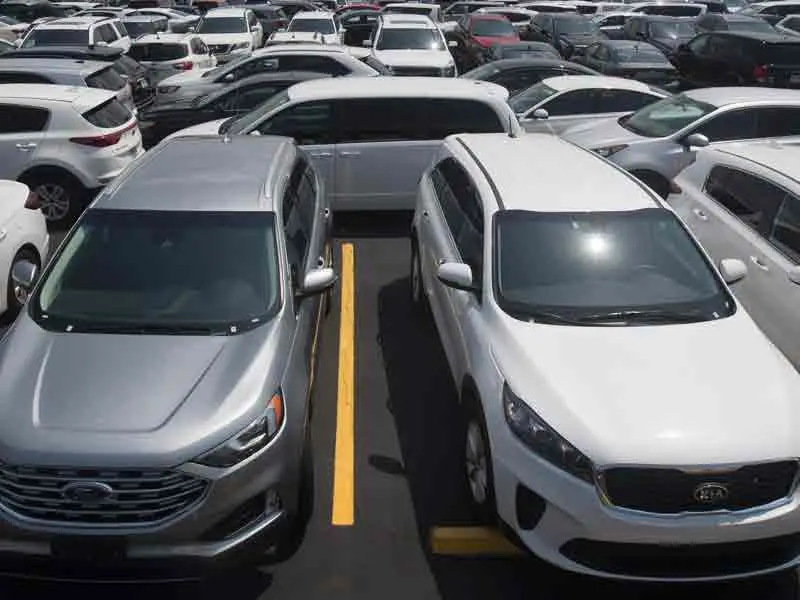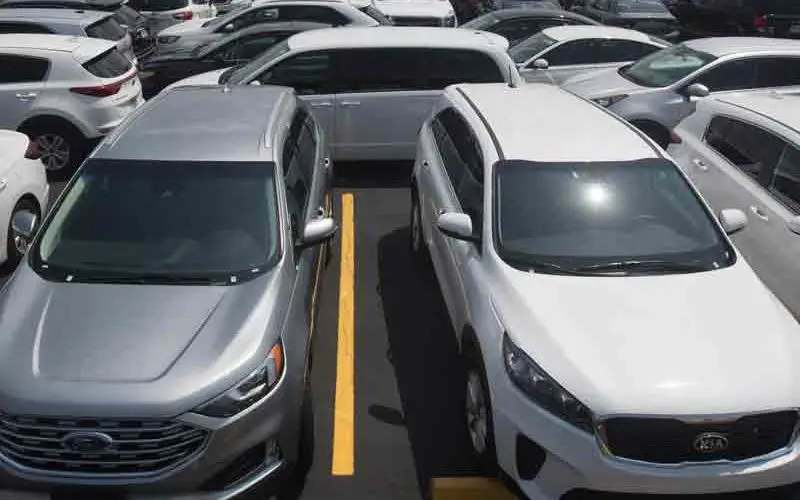Steps to buy a used Car

If you’re looking to buy an used car, you’re definately not alone. Between private-party and dealership sales, nearly 40 million used cars exchange hands each year.
With so many options, finding this one right car for you can be a challenge. So we’ve created a listing of steps to help make finding and buying your perfect used car a breeze.
Step 1: How much car can you afford?
A guideline: If you’re taking out a loan to fund your car, your car payment shouldn’t be much more than 20 percent of your take-home pay. If you’re staying with a tight budget, you might want to invest even less. Used cars will require a little extra attention from time to time: new tires, maintenance and the like. And then you will find one other ownership costs shoppers sometimes forget to take into account, such as for instance fuel and insurance.
If the car you’re planning to get is going of warranty, it could be a good idea setting aside a “just-in-case” fund to cover any unexpected repairs.
Step 2: Build a target list of used Cars
It’s no secret that the Honda Accord and Toyota Camry make once and for all used cars. But they may cost a couple of thousand more than a comparable Ford Fusion or Kia Optima, although they are good cars, too. So if you’re looking to truly save money, consider more than one brand. We suggest making a listing of three cars that meet your preferences and fall within your budget.
If you’re planning to get an automobile that is less than 5 years of age, consider one that’s certified pre-owned(CPO). CPO vehicles have long-term warranties which can be backed by the carmakers, not merely the dealership selling it to you. Franchised dealerships that sell that same brand new are the only ones who will sell a CPO car of the exact same brand. So if you wanted a CPO Chevy Cruze, like, you’d need to get it from a Chevy dealer.
Step 3: Check prices
Costs are driven partly by where you’re shopping. You’ll find used cars in used-car chapters of new-car dealerships, independent used-car lots, used-car retailers such as for instance CarMax and websites where private-party sellers list their cars. Of the four, private-party cars will usually have the cheapest selling price. CPO cars will usually cost the most, but also for the reasons we’ve noted. To see what others are paying for the models you’ve selected, Edmunds provides a quick solution to see the average price paid for the car in your area.
Step 4: Locate used cars for sale in your area
To locate the car you need, you can filter your search by many factors including the miles on the car’s odometer, its price and features, and dealer’s distance from you. Utilize the websites for other used-car marketplaces mentioned to truly save time.
Step 5: Check the vehicle history report
Unless you’re buying the car from a close friend or relative who will attest to its history, plan to acquire a vehicle history report. This really is a vital early step. If the car you’re taking a look at includes a bad history report, the sooner you understand the better.
AutoCheck and Carfax are the 2 best-known sources for vehicle history reports, which can reveal vital information about the car, including if the odometer has been rolled back or when it includes a salvage title, which means it’s been declared a total loss by the insurance company. You’ll use the car’s vehicle identification number (VIN) to have this information, and sometimes, all that’s necessary is the license plate number.
Step 6: Contact the seller
Once you see a great prospective car, don’t run out to see it. Call owner first. This is an excellent solution to establish a relationship with owner and verify the information concerning the car. You are able to ask private-party sellers why they’re parting with an automobile, or whether it has any mechanical problems. And if you’re buying from a store, a telephone call (or text) is the better way to ensure the car continues to be in stock.
Sometimes owner will mention something which wasn’t in the ad that might change your final decision to get the car. If you intend to go deeper, our used car questionnaire is an excellent reminder of what things to ask. You’ll realize that the past question on our list is the price tag of the car. Although a lot of folks are tempted to negotiate even before they have laid eyes on the car, it’s more straightforward to wait. When you see the car, you can tie your offer to its condition.
If things are going well, create an appointment to test-drive the car. If at all possible, ensure it is for daylight hours. That means it is more straightforward to begin to see the car’s condition.
Step 7: Test-Drive the Car
Test-driving an applied car is the better way to learn if this is the right car make and model for you. It’s also a good way to assess this kind of car’s condition. So tune out distractions and give attention to the car. Below are a few things to check on:
• Could it be easy to have in and out of the car without stooping or banging your head?
• Will there be enough headroom, hiproom and legroom? Remember to observe how these feel in the backseat, too.
• May be the driving position comfortable? Do you sit too low, too much or perhaps right in the car? Are you able to tilt or telescope the tyre for an improved fit?
• Are the seats comfortable? Are they easily adjustable? Will there be a lumbar support adjustment for the driver? Think about the front-seat passenger?
• Do you view a lit “check engine” light? If so, get that problem checked out before buying.
• How is the visibility? Check the rearview mirror and the side mirrors. Look for potential blind spots.
• Use your nose. Do you smell gas, burning oil, or anything amiss?
• Check out the tires. How old are they? Will there be enough tread left?
• How are the brakes? Are they doing the job of stopping the car? Do they squeak?
• Pop the hood. You do not have to learn a great deal about cars to see if something looks wrong. If something is leaking, steaming or covered in oil, it’s time and energy to ask questions.
• Does the air-conditioning blow cold? Do headlights, brake lights and turn indicators work? Test them to be sure.
After the test drive, ask the dog owner or dealer if you can see the service records. These can tell you if the car has already established the scheduled maintenance performed on time.
Step 8: Have the Car inspected
If you want the car, consider having a mechanic inspect it when you buy. If you do not have a mechanic, Google and Yelp are good places to learn local shops’reviews. A prepurchase inspection costs $100-$200 and can alert one to problems may very well not find yourself. It is a smart investment.
A private-party seller will likely allow you to achieve this without much resistance. Most dealerships allow you to borrow an automobile for an outside mechanic to inspect. You will end up paying for this, of course. If it’s a CPO car, there’s recently been an examination and the car includes a warranty, so there’s little reason to take it to an unbiased mechanic.
Step 9: Negotiate a good deal
Does the idea of “talking numbers” fill you with dread? It shouldn’t. Negotiating doesn’t have to be a drawn-out, traumatic experience. If you’re reasonable and have an idea, chances are you possibly can make an offer pretty quickly and easily:
• Decide beforehand how much you’re willing to invest to have the car. But don’t start with this specific number in your discussion.
• Make a beginning offer that is less than your maximum price, but in the ballpark based in your average price paid research in Step 3. Explain that you’ve done research on Edmunds or wherever else, so you have facts to guide your offer.
• If you and owner arrive at a high price that sounds good for you and is near the average price paid, you’re probably in good shape.
• And remember, the folks on one other side probably hate negotiating too (even if it’s their job).
Step 10: Have the Paperwork Done
If you’re at a store, you’ll sign the contract in the finance and insurance office. There, you will likely be offered additional items, such as a warranty, anti-theft devices, prepaid service plans or fabric protection.
Some individuals want the peace of mind that comes with extended warranties, so this really is something you may want to consider (unless the car continues to be underneath the manufacturer’s warranty or is a CPO vehicle). Review the dealership sales contract thoroughly. Generally in most states, it lists the expense of the automobile, a documentation fee, possibly a tiny charge for a smog certificate, sales tax and license fees.
If you’re buying a car from someone owner, make certain owner properly transfers the title and registration to you. It’s vital that you close the deal correctly to prevent after-sale hassles. Before money changes hands, request the title (which may also be called the pink slip) and have owner sign it over to you. Rules governing vehicle registration and licensing vary from state to state. If at all possible, check with the local department of motor vehicles to make sure you will find no past-due registration fees you’d lead to should you buy the car. Whether you buy from a dealer or an exclusive party, make sure you have insurance for the car when you drive it away.










